The Focke Wulf FW 200 was a German airliner pushed into the Luftwaffe in reconnaissance, anti-shipping/maritime patrol bomber and transport aircraft. The plane was quite successful during against ally transport convoys, earning it the nickname the scourge of the Atlantic. From august 1942, Catapult launched aircraft and new British carriers entering service started to pose a serious threat to the Condor.
The C-8 variant was the final variant of the FW 200. From Werknummer 0245 onward Focke-Wulf switched production to this variant. The C-8 was specifically designed to carry the HS 293 missiles. It consequently had the outer nacelles lengthened. 20 C8 variants were build in 1943. As with some C-4 variants, they were equipped with the FuG 200 Hohentwiel low-UHF band sea search radar.
The kit
The kit itself is a very nice kit. good details in the cockpit, nice engines and clear windows. The dorsal turrets can be removed to open the plane and give a look inside. Also the cockpit windows can be opened. However there are some flaws with the kit. Well I’m being nitpicky, but i fixed them nontheless. First the whole middle section of the plane is missing. While normally not very visible because the windows are rather small and the curtains to the middle are closed, I decided to scratch build the middle and open up the curtains to the rear and front. Secondly there are some flaws within the cockpit. At the left wall of the radio gunner there are some shelves, however these don’t appear on any footage of the plane. I left the table thingy for the machine gunner out, since I don’t think that was included with later versions of the plane. The MG151 turret has a gunner seat build in, so the platform to stand on isn’t really necessary anymore.
The wheel wells also could use an upgrade. Based on the pictures of the currently being restored condor, the wheel well is somewhat inaccurate. The part that comes out of the well is nicely done, but the connection to the frame is kinda sloppy with gross generalizations and lacking details in both the housing and the framework. This was also fixed.
The rest of the plane required little work and fitted rather well.This is also one of those kit’s that i put on hiatus a long time. I had grand plans to include working lights and engines in the kit, however i couldn’t get the wiring in place for the inner engines as the wheel wells where too large. I tried this multiple times over multiple months, untill I finally decided fuck it, and tore all the electronics out of it, even the working lights, which i later regretted. But it did give me the motivation to finish the kit. With the Eduard parts the kit really shines as a centerpiece of my collection. All in all this kit is a blast to build, with little to no fitting issues.
markings
The Revell kit comes with markings for four different planes:
| Variant | Callsign | Werknummer | Year | Note |
| F8+KR | 1944 | Fiction? | ||
| C-8/U10 | F8+FR | 1944 | Found in Norway in 1945 at the end of the war, this plane belonged to the 7./KG 40. Originally painted in the standard factory pattern of RLM 72/73, it was later extended with the application of a mottle pattern on the sides of the plane. The history is not completely known, with a possibility of multiple planes flying under this designation. | |
| C-8 | TO+XL | 0256 | 1943 | fate unknown. |
| C-8 | F8+OL/TA+MZ | 0224 | 1944 | Build in 1943 and delivered as TA+MZ . Crashed 400 km north of the Lofoten, Norway in 1944. Officer Alfred Göbel and 6 other crewmembers were killed. |
| C-3 | F8+CT | 0039 | 1945 | Interestingly, according to the construction manual F8-CT was a C-5/FK variant of the III./KG 40 that was in Braunschweig on may ’45. However the actual F8-CT was a C-3 variant. Delivered as SG-KO, it also flew under F8-AH. It belonged to I./KG 40 and crashed on 16-04-1941 north of Scotland. It was flown by Oblt. Richter. |
source: Focke-Wulf Fw200; Nowarra, Heinz J.
F8-FR, The plane on the box-art has the most interesting looking with the Wellenmüster camouflage, however I can’t find evidence this plane existed. Luckily, alternative markings for F8+FR are provided. this plane did exist and had the wellenmüster camouflage as well. There are some photo’s known of this plane. I decided to create the earlier camouflage from the gothafen-Hexengrund picture. Somewhere between that pic and the end of the war, most likely the start of the winter of ’45, a heavier white pattern was applied.
according to the manual the white pattern needed to be applied to the nacelles as well, however i decided not to as the pictures tell a different story.
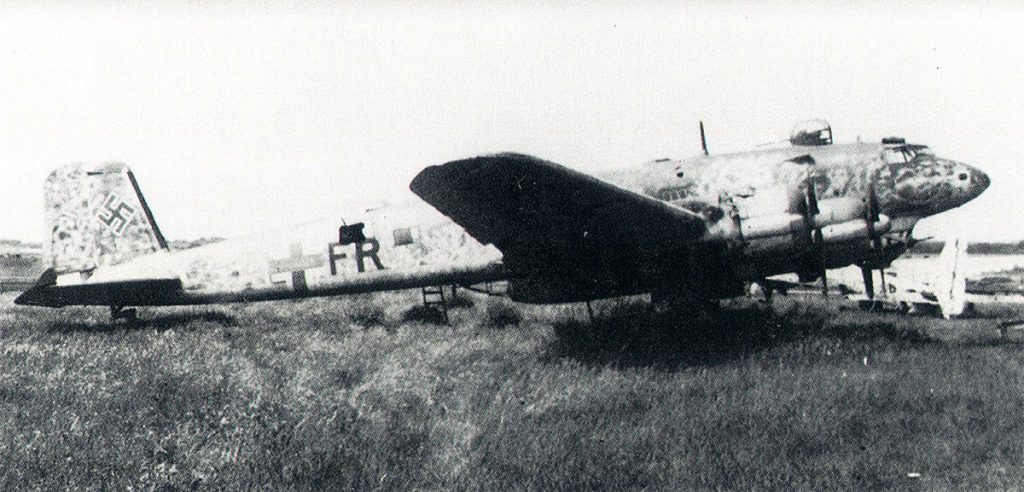
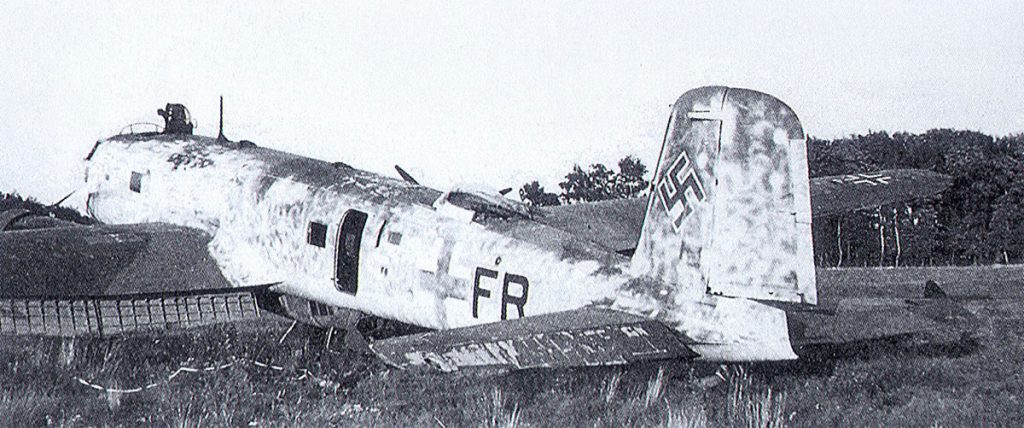

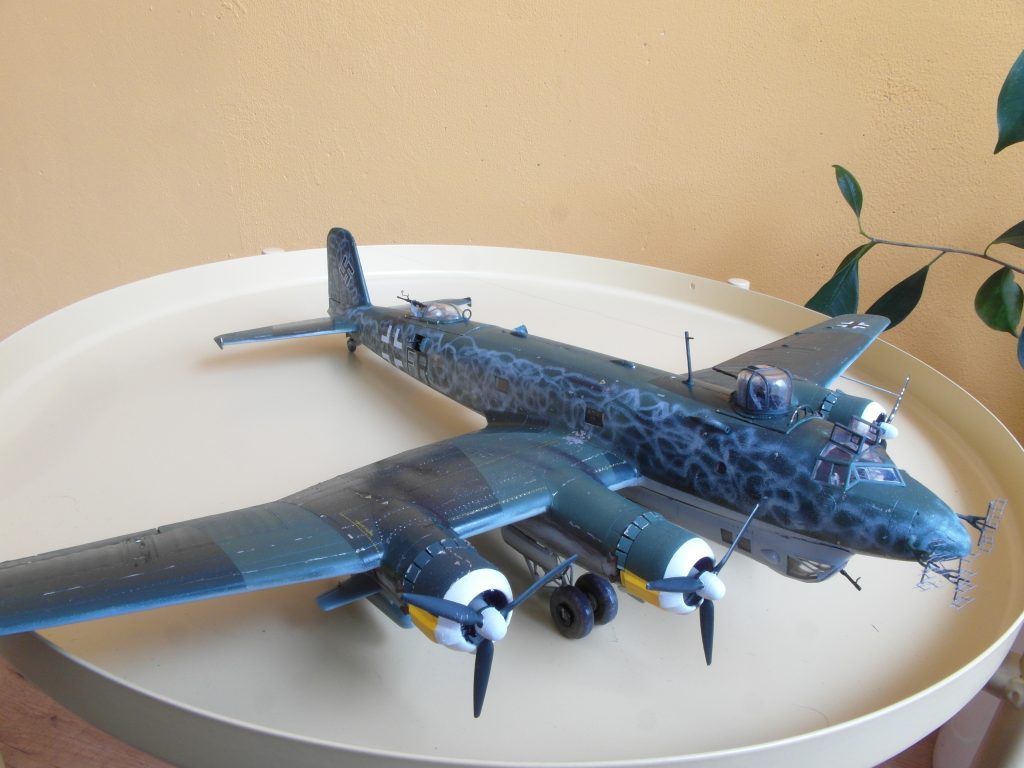
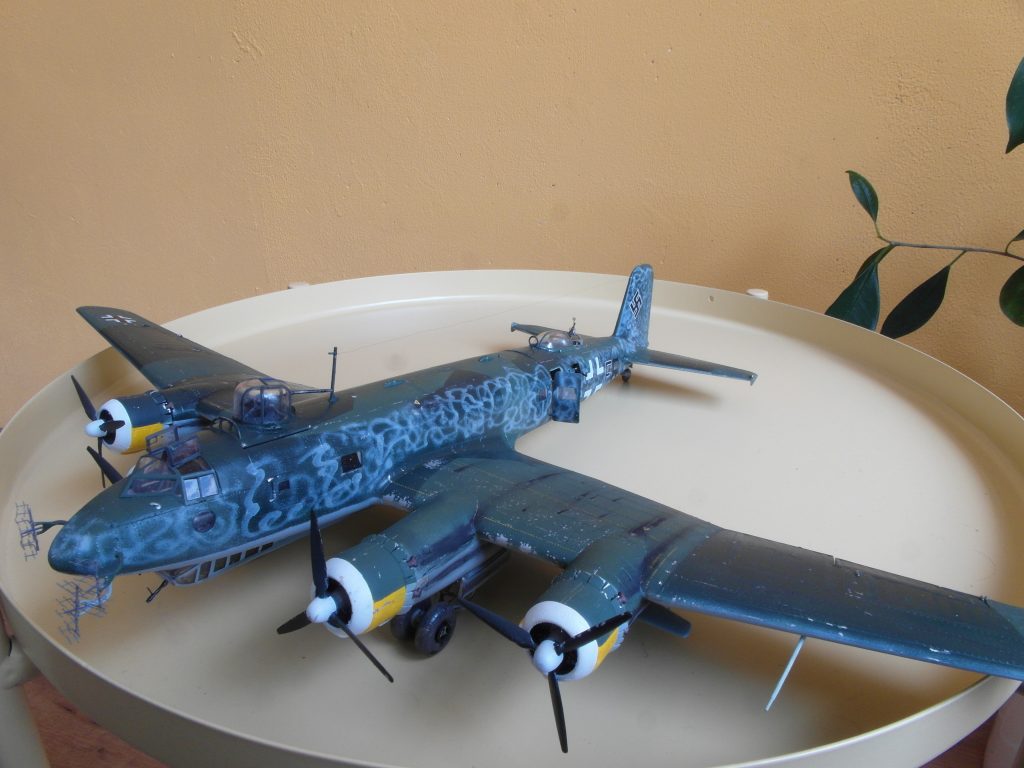
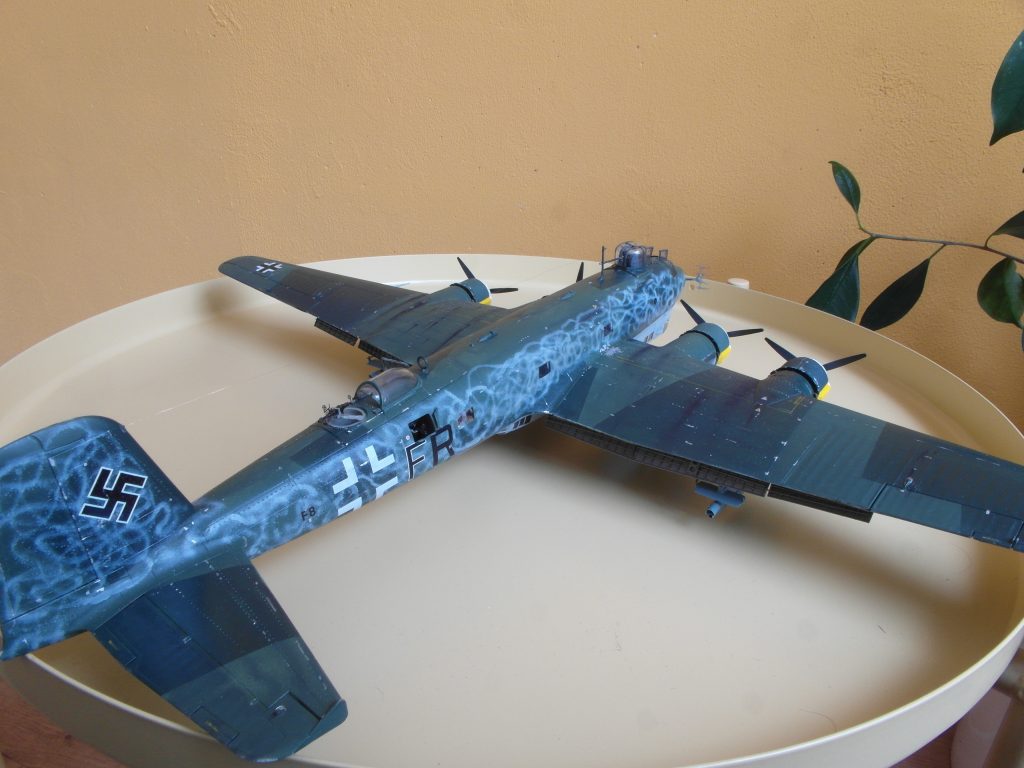
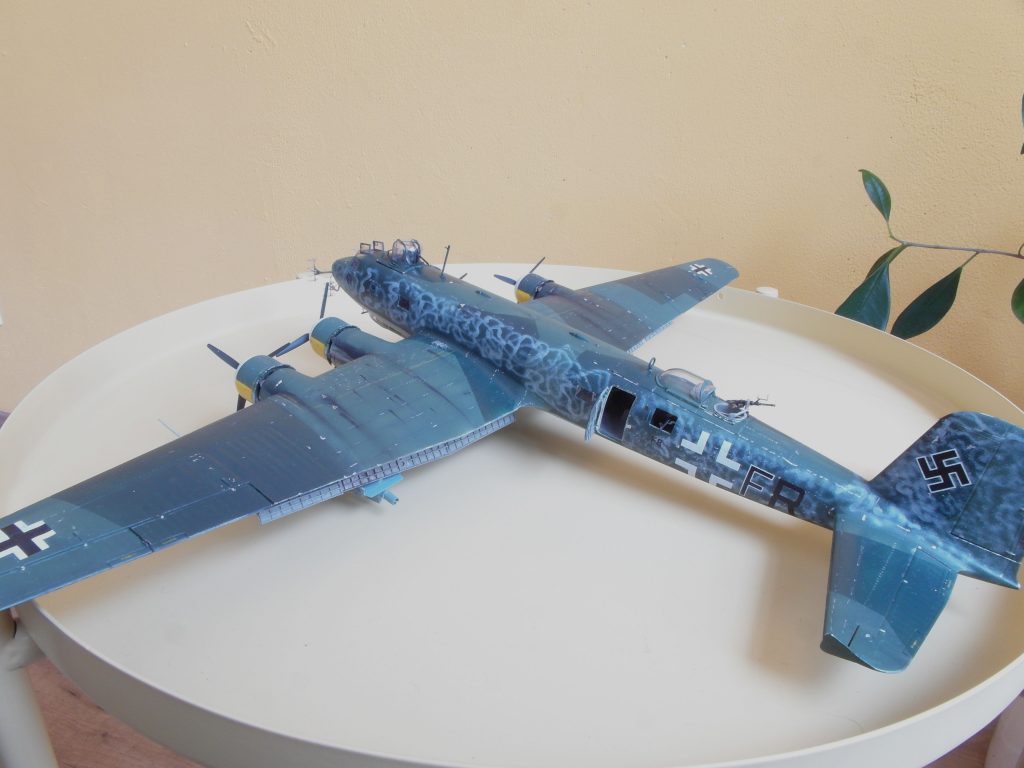
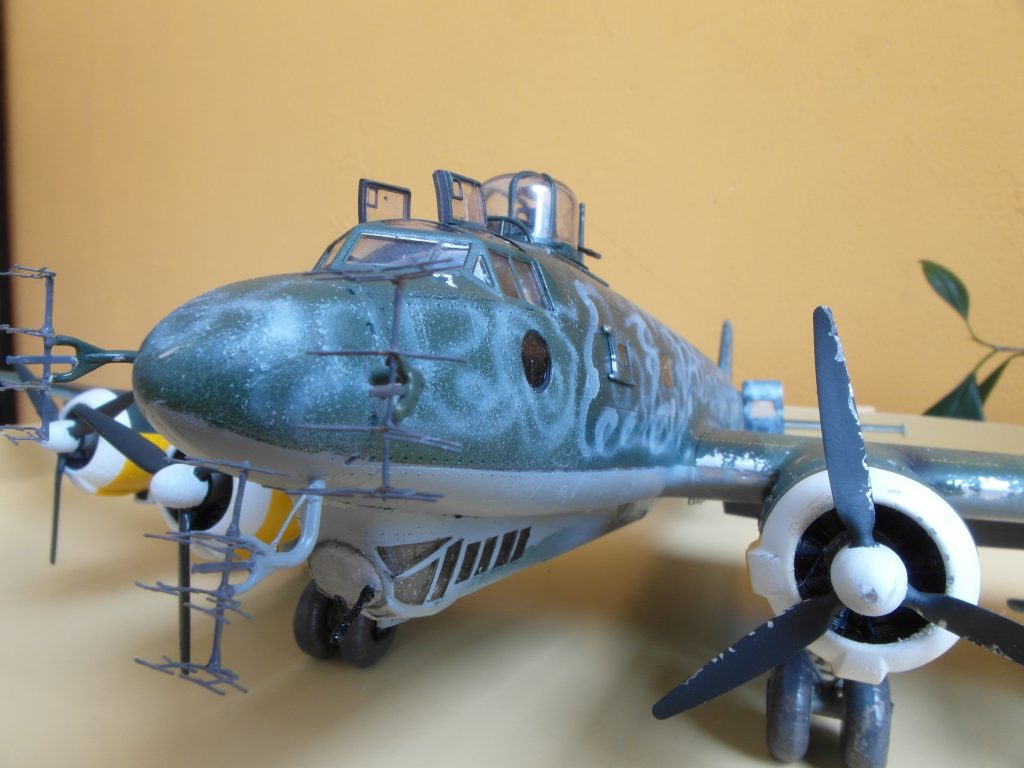
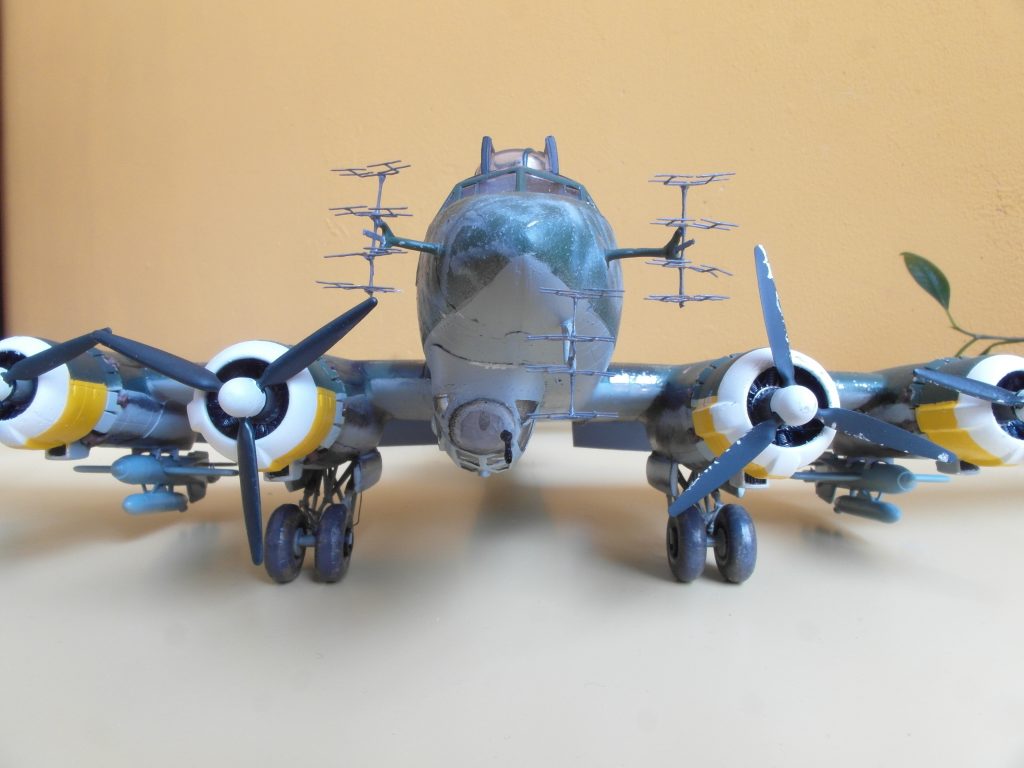
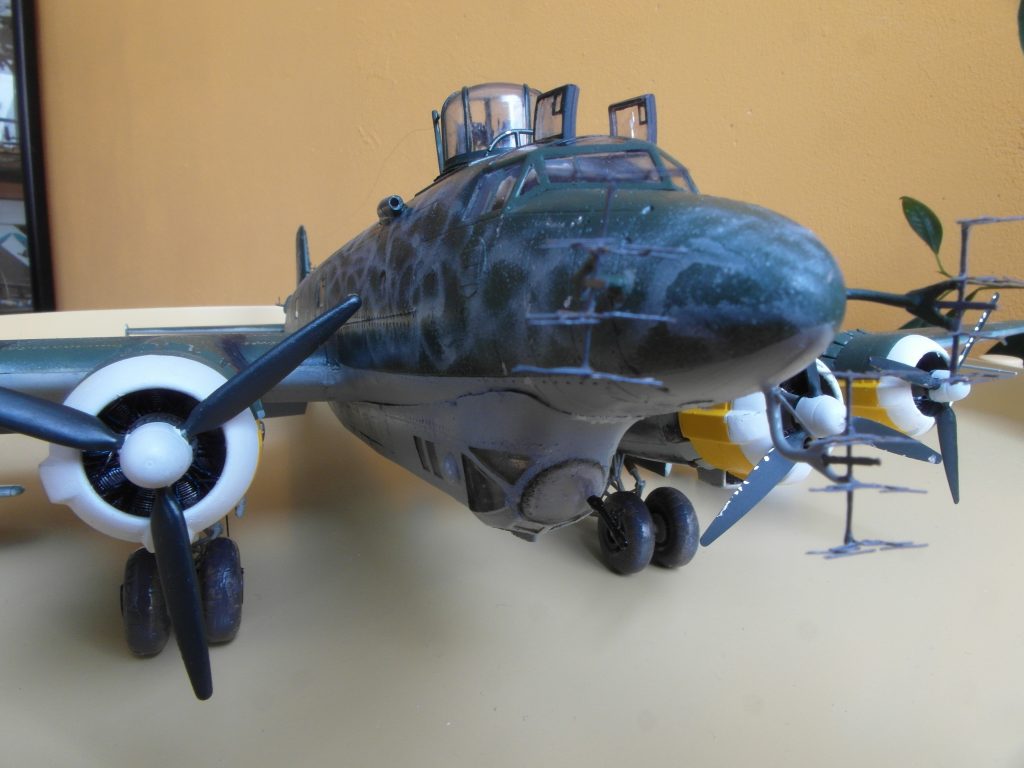
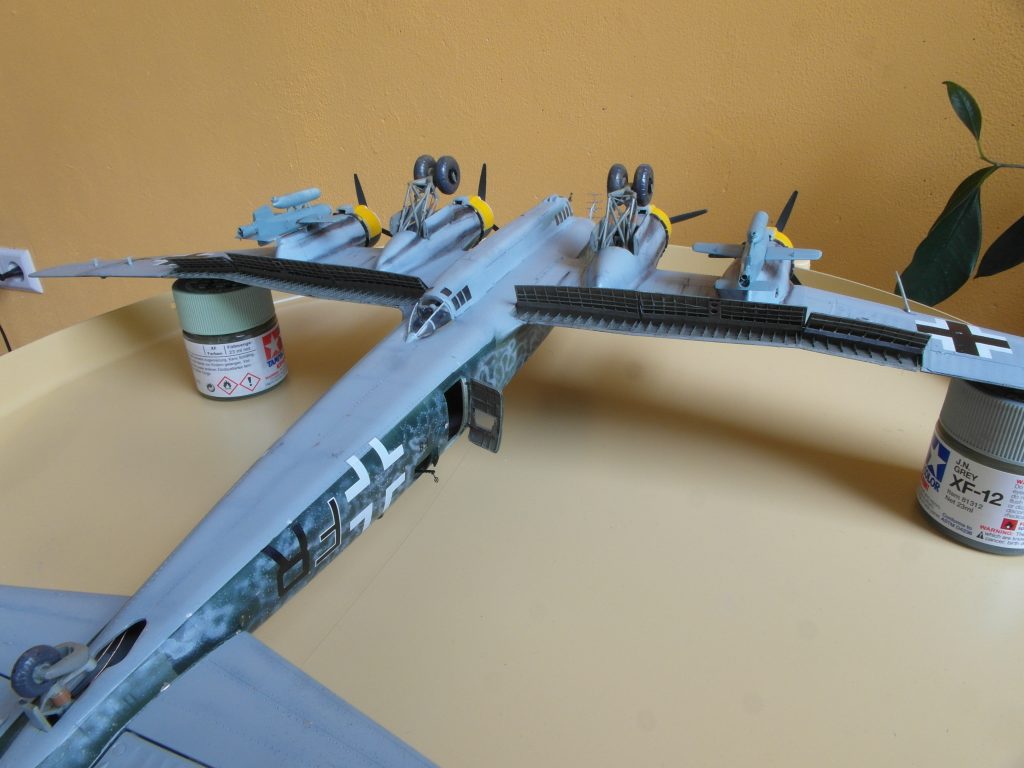


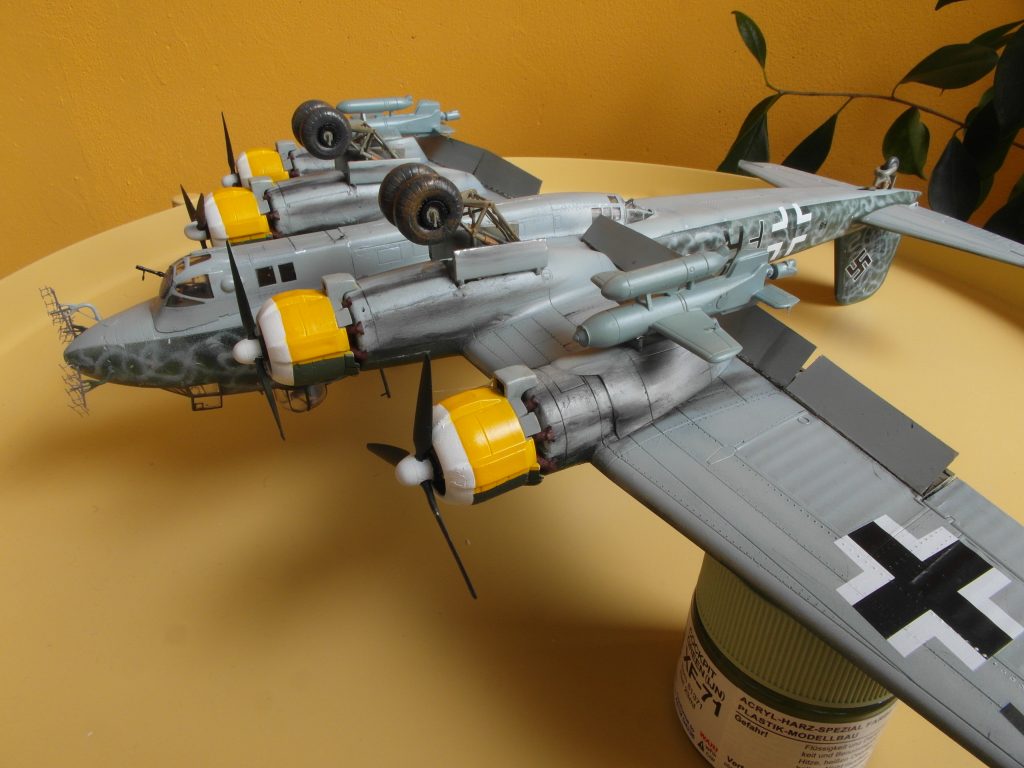
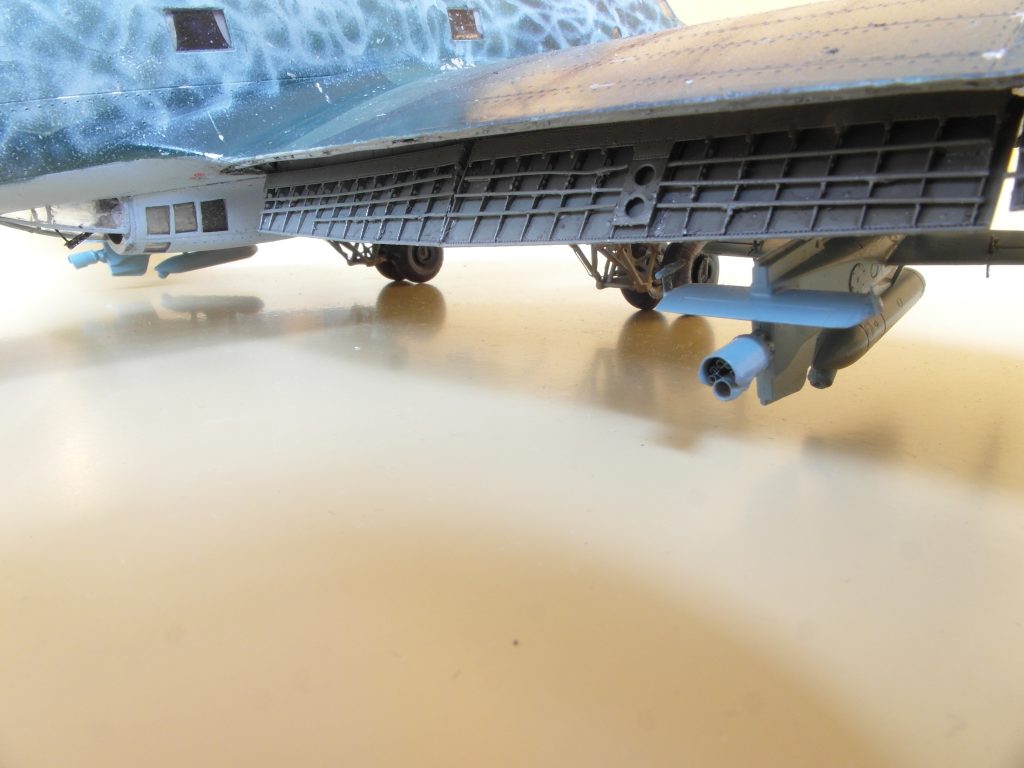
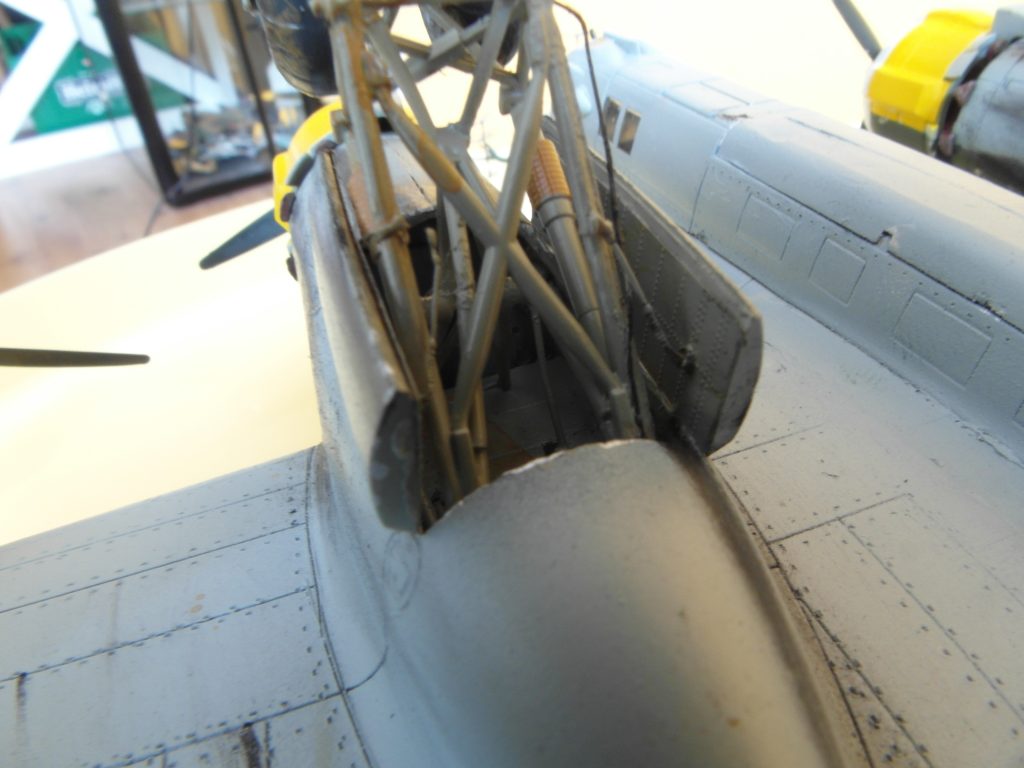
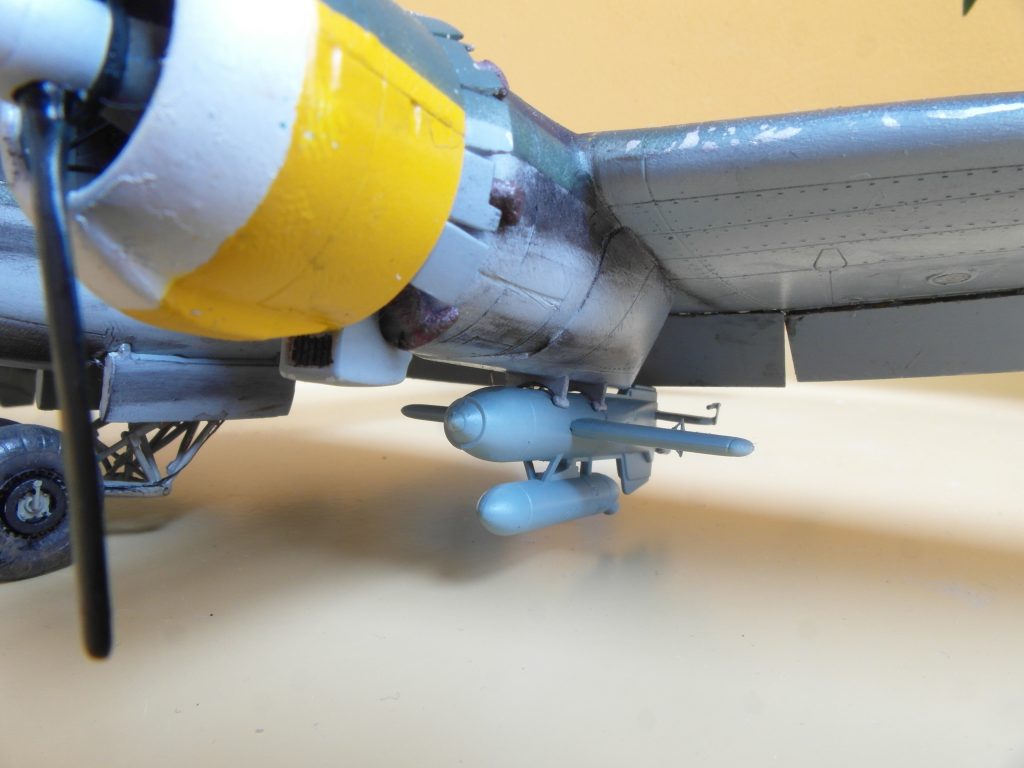
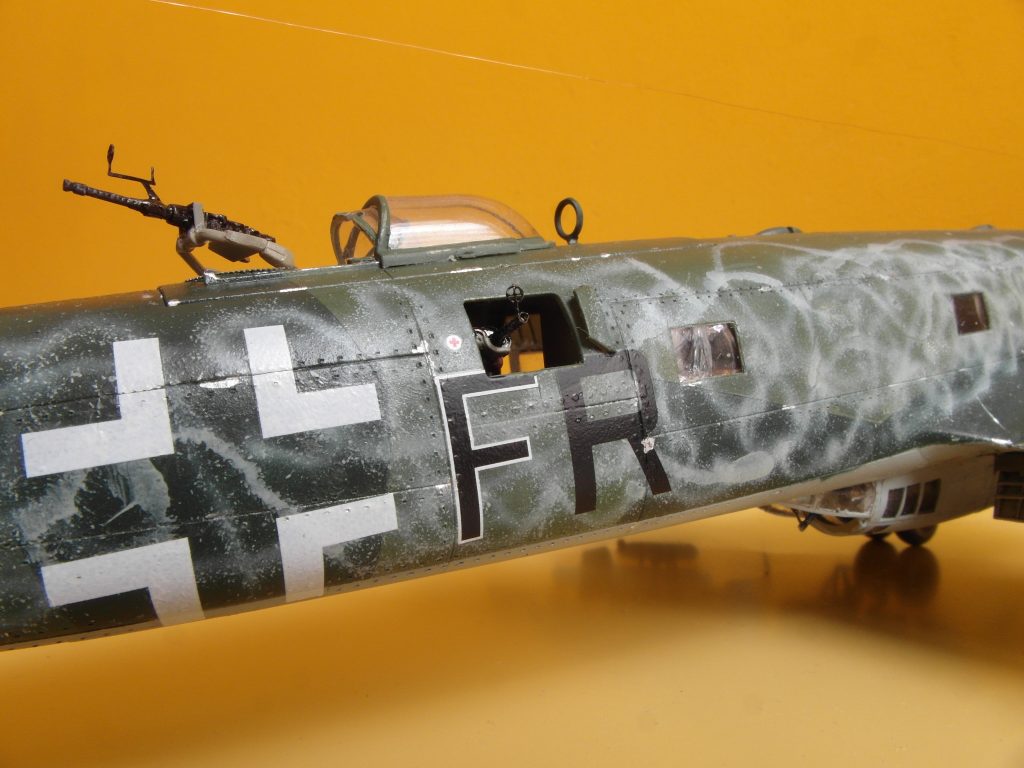
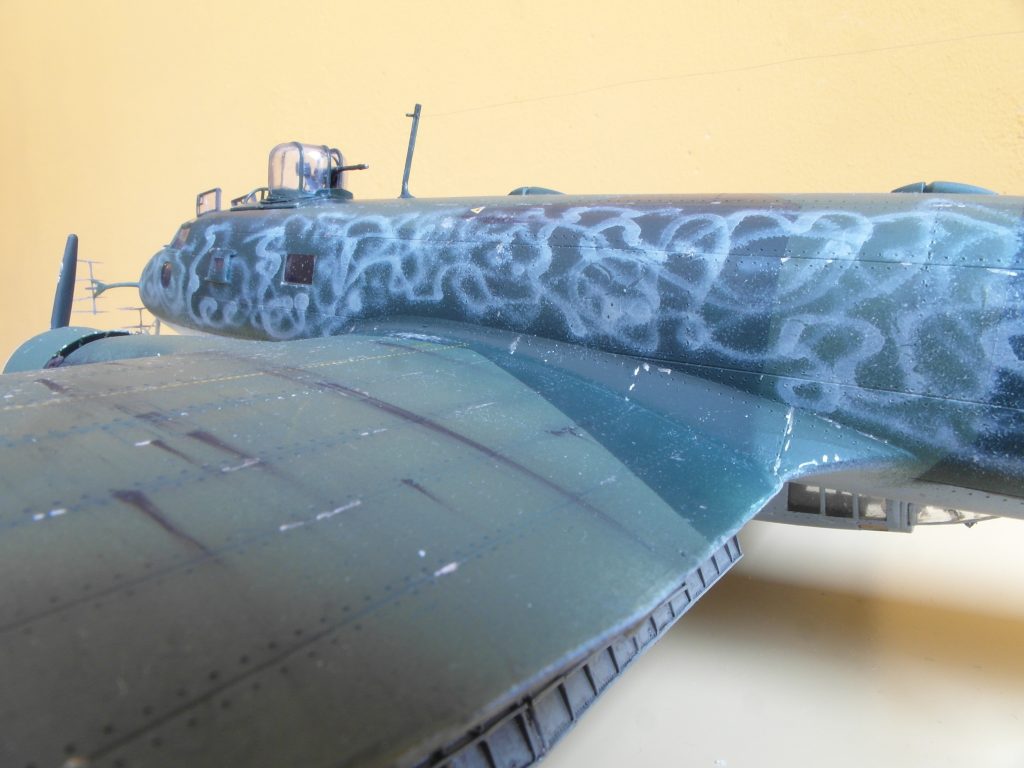
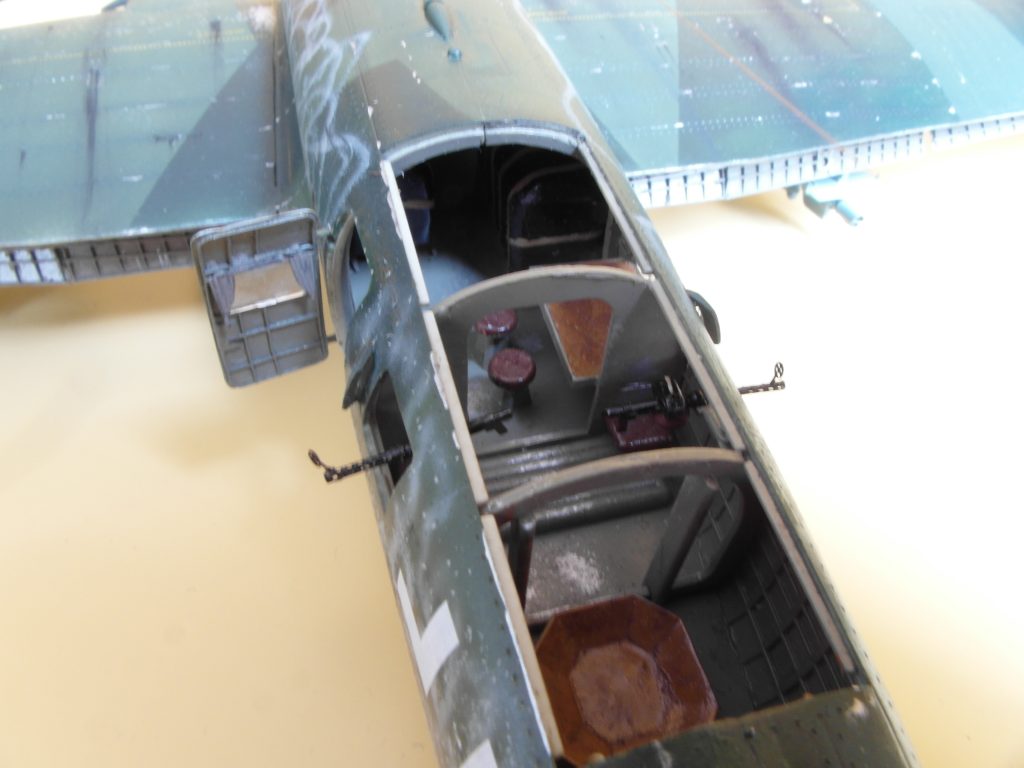
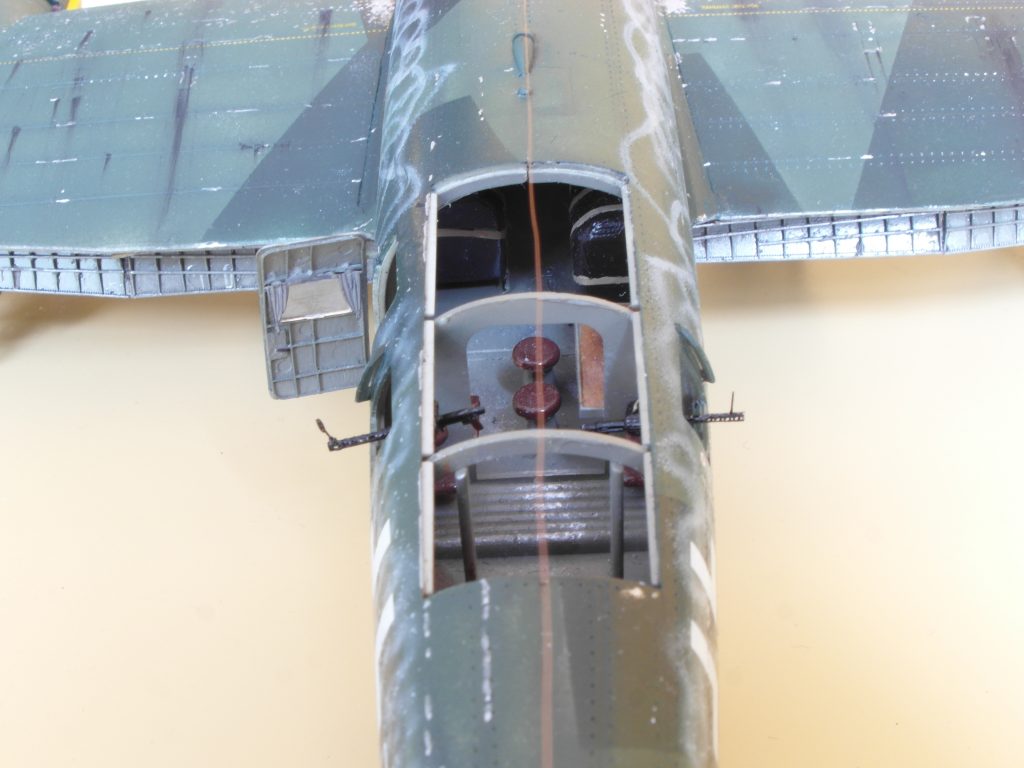
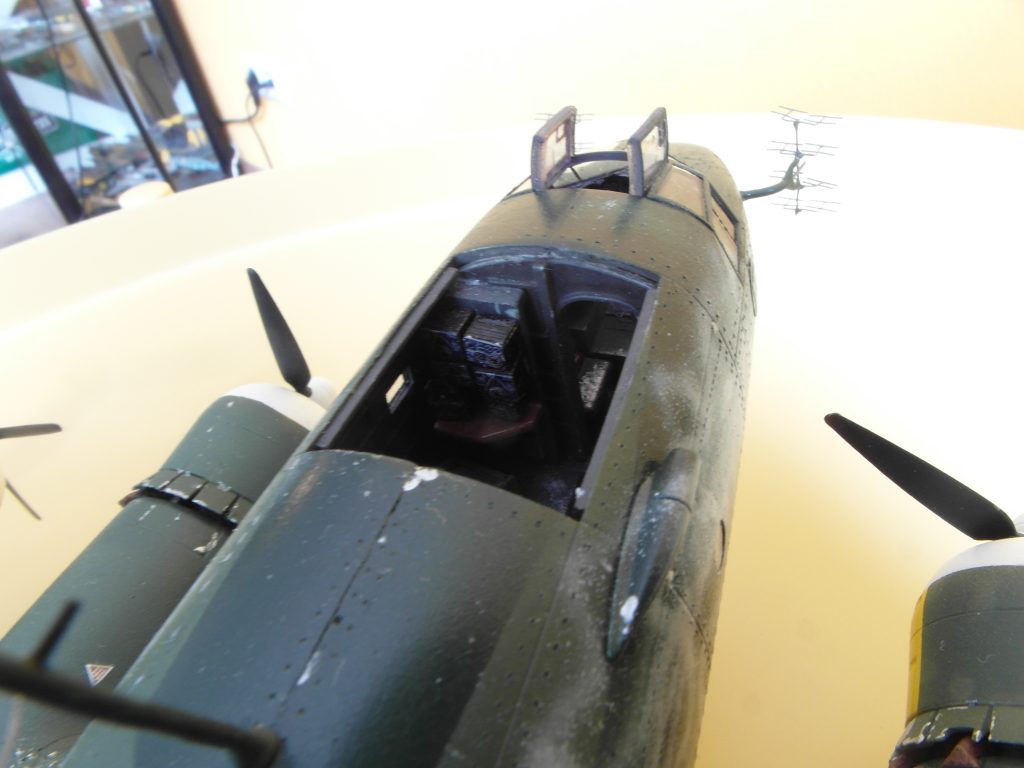
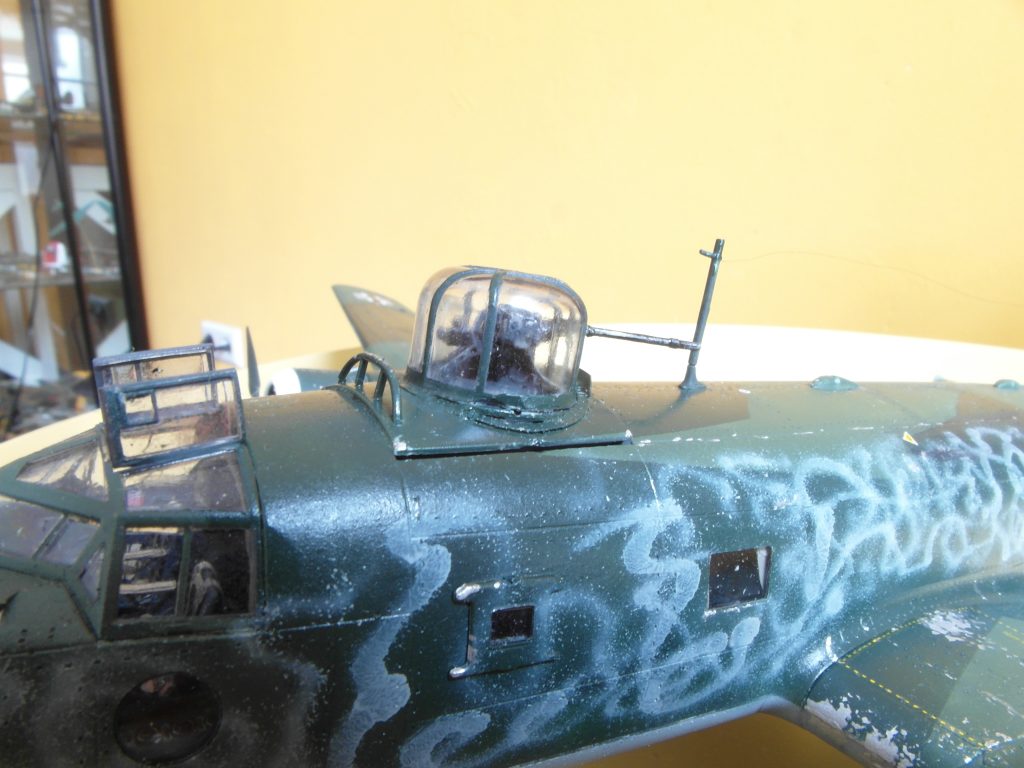
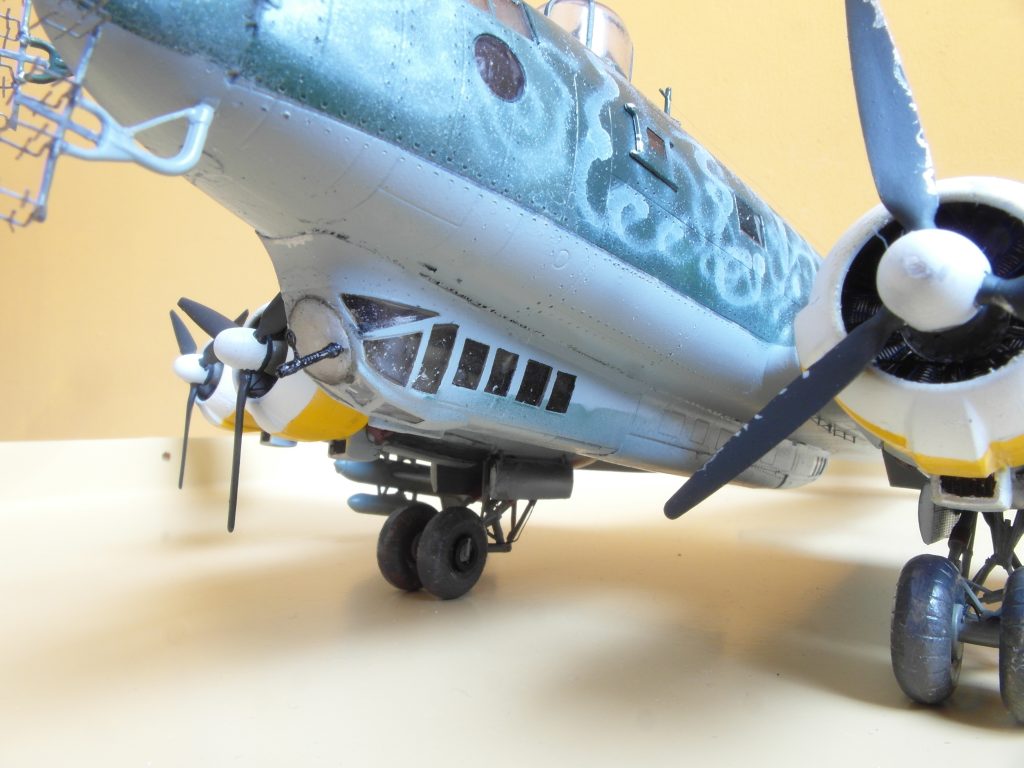
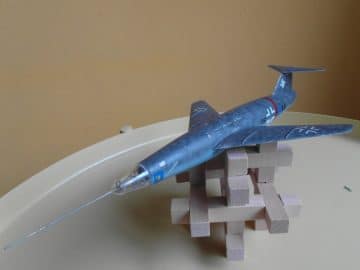
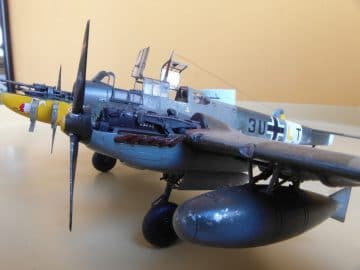
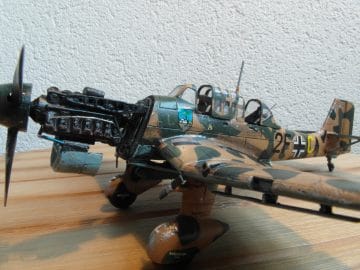
The call sign F8+KR of the Focke-Wulf Fw 200 is not fictitious:
On July 9, 1944, in the municipality of Saint Nicolas the Biefs (Allier), 20 km west of Roanne (Loire), the Focke-Wulf 200 C 4 “Condor”, serial number 0-183, coded F8 + KR (previously coded GC + SL), belonging to the 7th Staffel of the third Group of the 40th Kampfgeschwader, crashes to the ground by mist of time 5h 45, near the farm of “La Coupé” in a wooded and mountainous land.
The unit made a connecting flight with transport staff between German bases on the Atlantic coast and Germany. This four-engine took off from La Rochelle with on board: four crew members: Leutnant Helmut Kutterer, pilot, Feldwebel Karl Novotny or Nowotny, second pilot, Feldwebel Horst Flechsig, first radio and Feldwebel Karl Greeb second radio; eight passengers: Unteroffizier Kurt Schramm, Ernst Unteroffizier Kreigenfeld, Obergefreiter Erhard Sumpf, Oberfeldwebel Siegfried Kalinowski, Unteroffizier Bruno Greil, Unteroffizier Georg Kunis, Obergefreiter Walter Kobrich, Unteroffizier Ernst Lupp.